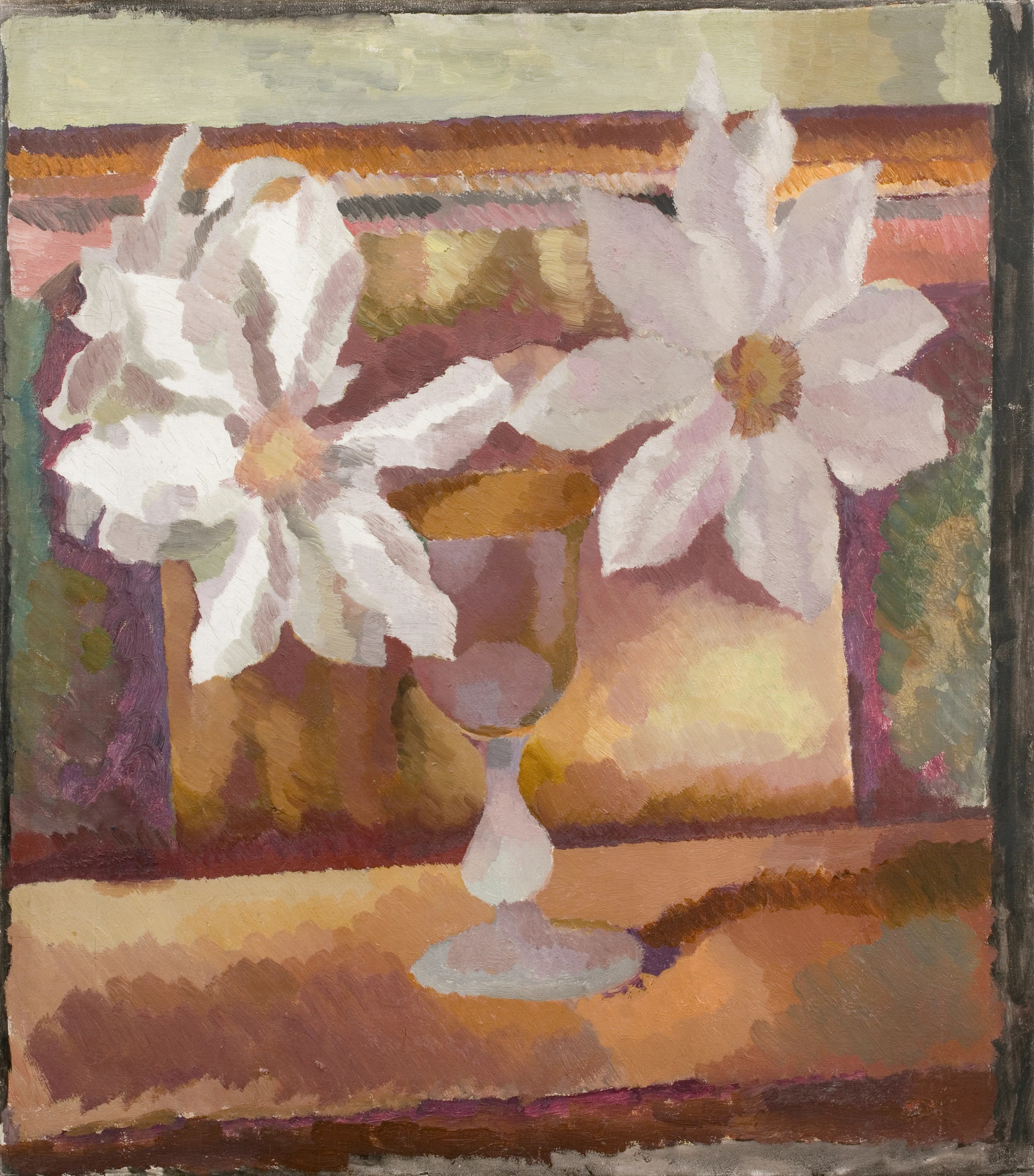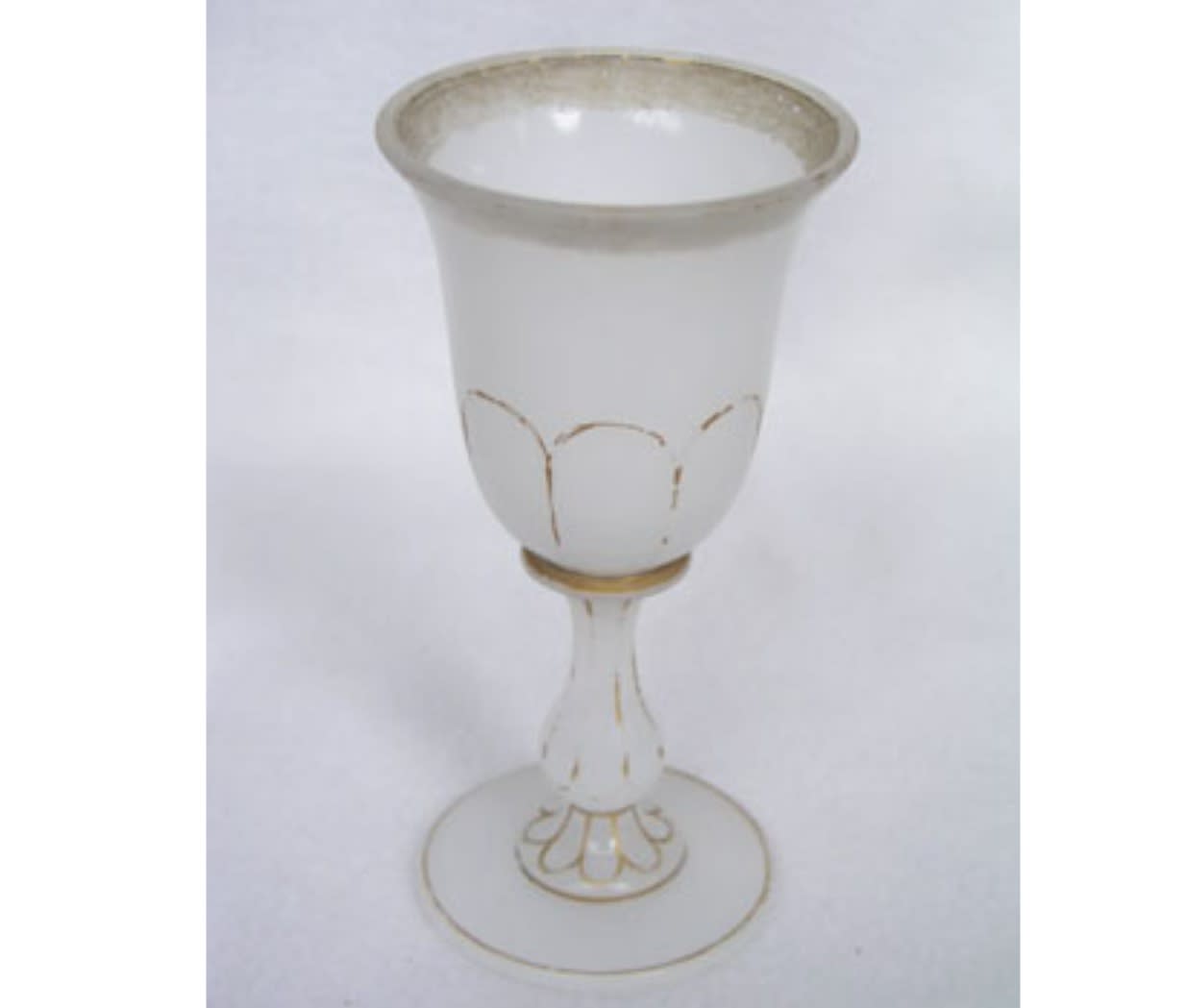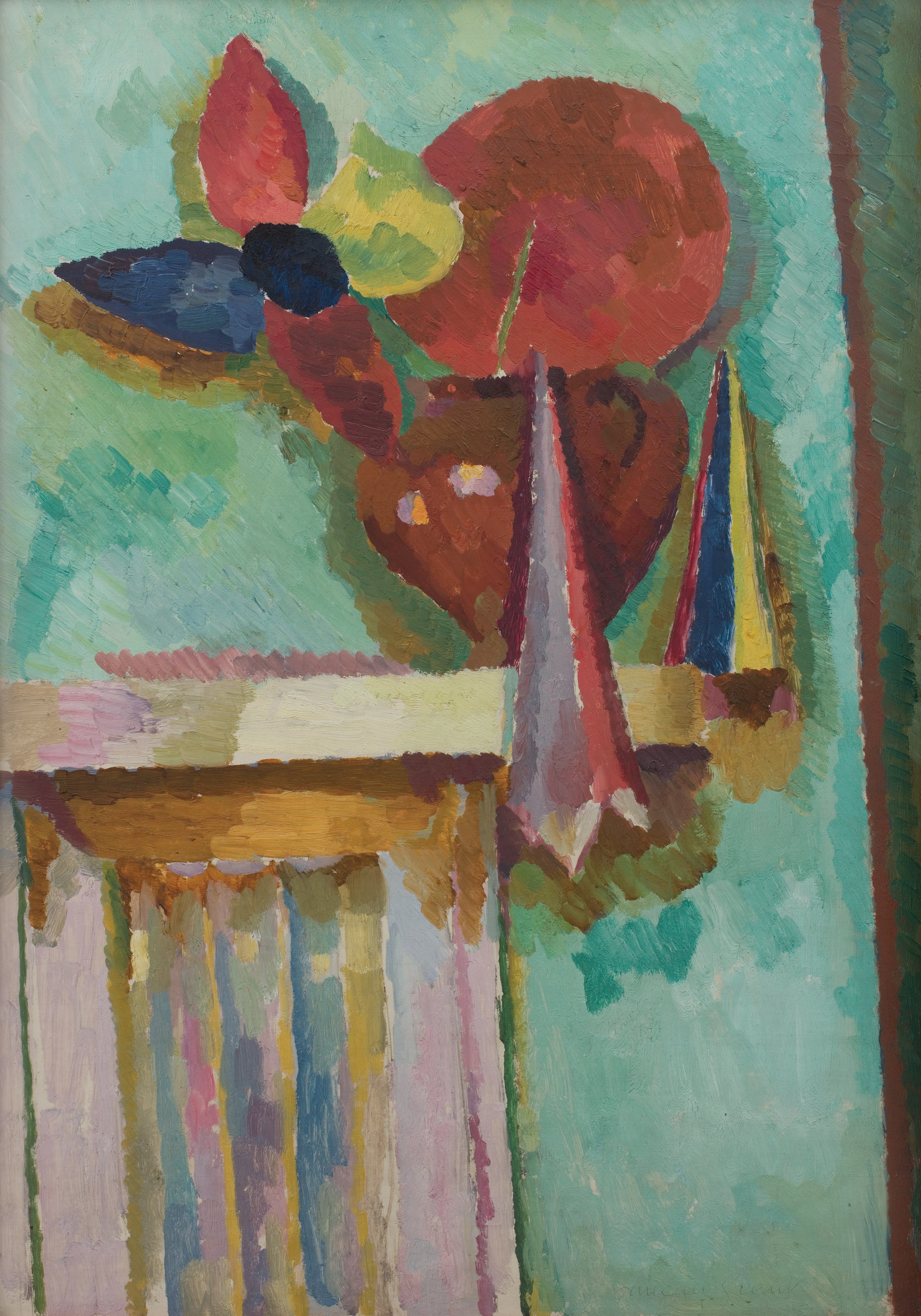Duncan Grant’s early still-life pictures contributed to a new universe of creativity that skilfully brought together easel painting, decorative objects and interior design.
InSight No. 141
Duncan Grant | Still Life, c. 1917-18

Western artists have been painting flowers in receptacles since the late middle ages. Where they once appeared in Christian devotional images to signify virtues or vices, as in Hans Memling’s decorative panel (likely once connected to a diptych representing the Virgin and Child), they latterly shed their religious connotations and came to serve as attractive, unproblematic images suitable for domestic decoration.

In the early career of Duncan Grant (1885—1978), a time of modernist foment, flowers continued to be a source of visual pleasure. However, in the paintings of Grant and his close circle, most especially Vanessa Bell and Roger Fry, flowers and other decorative objets began to strain against the narrow limits of the still life genre as it had been construed from Jan Davidsz. de Heem in seventeenth-century Utrecht and Antwerp to Henri Fantin-Latour and even Claude Monet in late nineteenth-century Paris. For those earlier artists, a flower or a lemon or a pewter plate was represented as completely as the artist’s culture and individual genius permitted: the pleasure of the picture lay in its ability to mimic the original and the intensity of the picture was judged by its closeness to observable reality.
For Grant, as for certain other modernist painters of the early twentieth century, the object-like quality of the painting itself began to contend with the subject it represented. An informal manner of applying paint—especially broken brushstrokes arranged in a decorative formation—helped to invest a picture with those qualities of texture, surface and shape that had previously been appreciated in the mediated form of a simulacrum. The epitome of this idea was Pablo Picasso’s Still Life with Chair Caning, where actual pieces of caning were applied to the surface and a piece of rope was used as a frame.

In Grant’s picture Still Life, painted after he and Vanessa Bell moved to Charleston Farmhouse in Sussex in autumn 1916, three white clematis or dahlia flowers are arranged in a goblet. This nineteenth-century goblet, pictured above, made of milk glass and decorated with gilding, is still in Charleston’s collection. The flowers in the painting have an elaborate morphology: each petal is individually shaped though most have a billowing outline and ogival tips. Their sophisticated shapes and colours are redolent of man-made artifice. Grant treated the picture surface as a solid mosaic of thick paint, with neighbouring areas painted in distinct but finely graded tonal contrasts of light and dark. The petals of the left-hand flower are partly illuminated by direct light, with these areas treated in brilliant white, while those of the right-hand flower are in half tones splintered into shades of grey and lilac. The naturalistic play of light depicted in the picture locks into the flat patterns of the paintwork, which is mostly built up with short downward brushstrokes that run diagonally from left to right.

At the time he painted Still Life, Grant was a director of the Omega Workshops Ltd. The company rejected ‘shop finish’ in favour of ‘allowing free play to the delight in creation’, as Roger Fry wrote in the preface to a trade catalogue, and one of its most characteristic and saleable products were brightly coloured hand-made paper flowers. Such innovative items, readily categorised today as ‘homeware’, were available besides everything from marquetry to hand-painted handbags. Grant, Bell and Fry each made still-life paintings that depict them; they were an ideal subject because they created an ambiguity around the limits of handicraft, bringing flowers—natural and artificial—into a continuum with paintings of the same. As visual objects, those paintings of real and fake flowers served a similar function to the flowers themselves, and it is partly that coherent blending of visual and material cultures that distinguishes Grant and his friends as some of the most original creative minds of their period.
Images
1. Duncan Grant, Still Life, c. 1917-18, oil on canvas, 56 x 49.5 cm
2. Hans Memling, Flowers in a Jug, c. 1485, Thyssen-Bornemisza Museo Nacional, Madrid
3. Milk glass goblet, nineteenth century, The Charleston Trust
4. Duncan Grant, Paper Flowers, 1917, Private Collection

